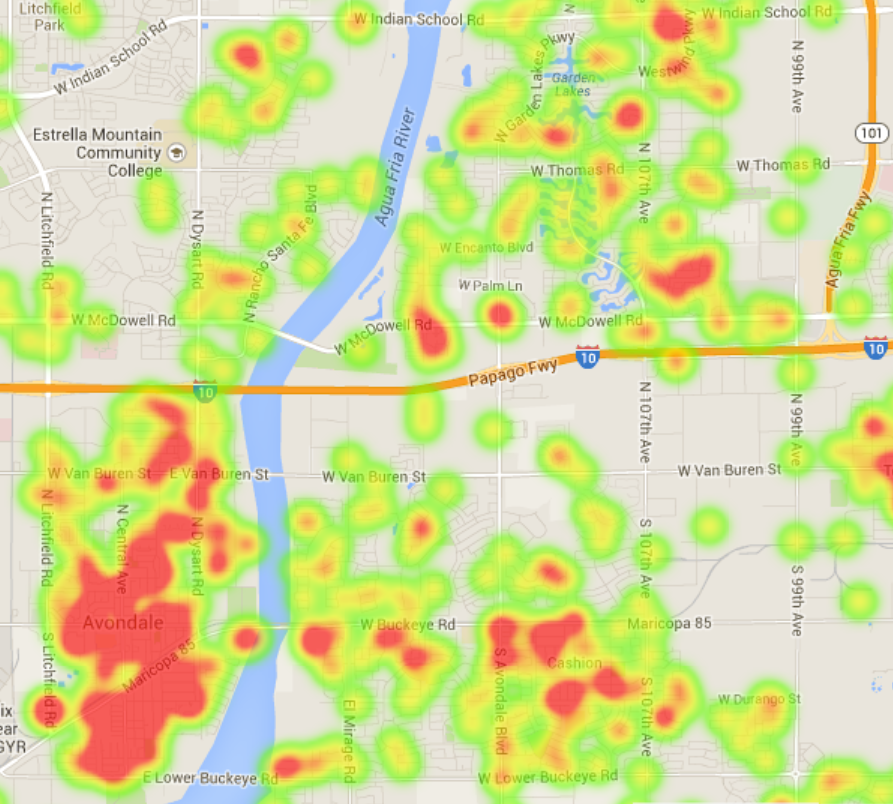Using Emergency Reporting for NFPA 1730
My name is Roger Parker, and I’m the Fire Marshal at Avondale Fire Rescue. We are faced with the same challenges as many fire departments. Our Fire Prevention Division has limited resources and staffing to protect our 80,000 residents. Until now there was no national standard to help us prioritize our inspections or justify new resources.
That’s about to change. The National Fire Protection Association is in the process of writing a new standard entitled, “Standard on Organization and Deployment of Fire Prevention and Code Enforcement, Plan Review, Investigation, and Public Education Operations to the Public (NFPA 1730)â€. It is currently in draft form with a proposed implementation date of 2016.
NFPA 1730 will be the future standard for the management of fire prevention organizations. The purpose of NFPA 1730 is to specify minimum criteria to address the effectiveness and efficiency of the fire prevention organization functions including: fire prevention inspection and code enforcement, plan review, investigation, and public education operations.
After completing a detailed review of the draft version of NFPA 1730, we realized that Emergency Reporting is the ideal software to help manage the implementation of these standards. Avondale has been using Emergency Reporting since January of 2012. Over the past two-and-a-half years, our fire prevention staff has been building a detailed database of fire hydrants, occupancies, fire protection systems, contacts, hazards, assessed values, jobs, etc. The Emergency Reporting database now has the necessary data for us to do some detailed analysis, decision making, and planning for the future.
Following are some highlights of NFPA 1730 standards and how Avondale is using Emergency Reporting to comply with them:
The Fire Prevention Organization (FPO) shall conduct a Community Risk Assessment (CRA) to identify the needs and the circumstances of the community and to establish the level of fire prevention activities. The purpose of that process is to assist in the development and implementation of a Community Risk Reduction (CRR) plan and programs to reduce, mitigate, or eliminate the community’s risks. The CRA shall include a building stock profile that describes the various occupancy classification types and number of buildings in the community to classify their hazard risk category based on their probability and impact. The FPO shall analyze the data, categorize the risks, and identify risks facing the community.
As a side note, Avondale has input detailed information for more than 2,500 facilities into our database and classified them by occupancy types and uses. The Emergency Reporting VISIONâ„¢ Module was then used to analyze the data and categorize the risks based on the probability and impact. The VISIONâ„¢ Module establishes an Occupancy Vulnerability Assessment Profile (OVAP) score for each occupancy, then color codes each facility icon on Google Maps for a visual reference.
- The CRA shall be the basis for the deployment of the fire prevention inspection program. The minimum inspection frequency for existing occupancy inspections shall be based on the occupancy risk classification.
Avondale is using ER incident data (fire experience), occupancy data, and VISION OVAP scores as the basis for prioritizing existing building inspections based on the occupancy risk classification.
- The FPO shall conduct a needs analysis on the risks and identify strategies to include in a Community Risk Reduction (CRR) plan.
Avondale is using Emergency Reporting to identify strategies to include in a Community Risk Reduction (CRR) plan.
- The FPO shall assess the performance of the risk reduction programs on an ongoing basis to evaluate efficiency and effectiveness and modify the programs accordingly.
Avondale is working with Emergency Reporting to write a new report that would allow fire marshals to extract data for occupancies, risks, inspection types, inspection status, and inspectors to assess the performance of the risk reduction program on an ongoing basis to evaluate efficiency and effectiveness and modify the programs accordingly.
- The CRA shall include a fire experience profile that describes the community’s fire experience and trends and how the community’s experience compares to statewide and national trends.
Avondale is using Emergency Reporting to identify the community’s fire experience and trends and how the community’s experience compares to statewide and national trends. Below is the Emergency Reporting heat map showing the location of 10 years of structure fires in Avondale.
I’ve been working in fire prevention for 30 years, and it’s been challenging to manage occupancies, risks, and inspections with limited resources, very little data, and no national standard that covers fire prevention deployment. Now that we use Emergency Reporting, I have the tools and the information to manage our fire prevention program more efficiently and effectively. I was really excited to see that two-and-a-half years of data we input into Emergency Reporting works almost seamlessly to comply with the requirements of the future NFPA 1730 standard. I’m impressed that the people at Emergency Reporting had the foresight to build a program that meets the needs of a future national standard.




